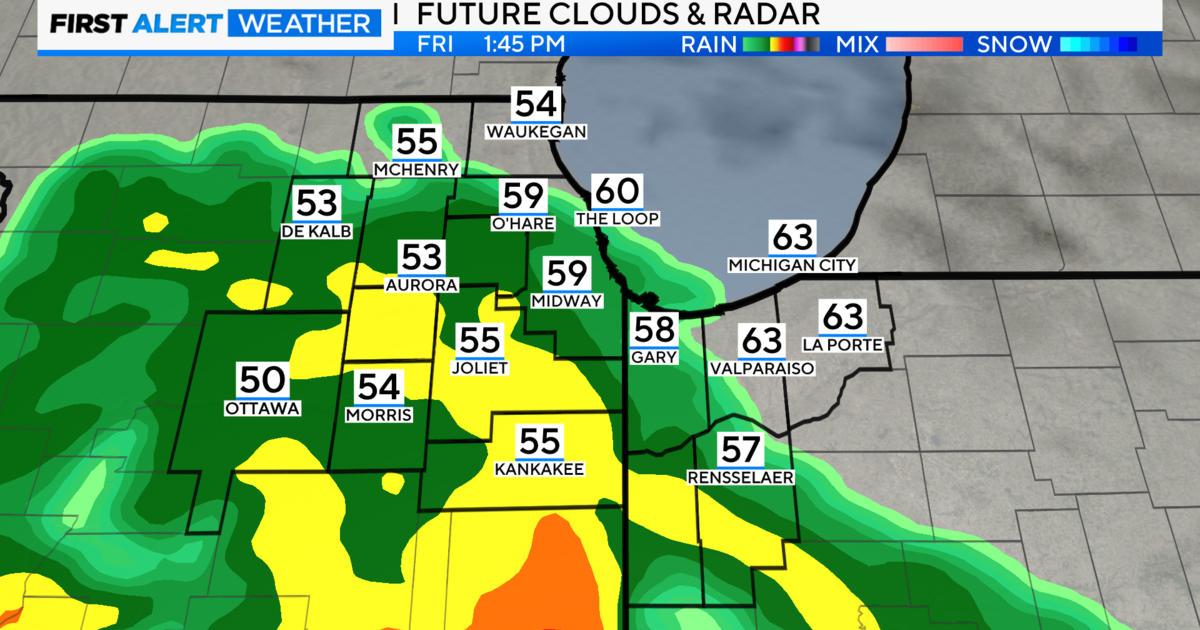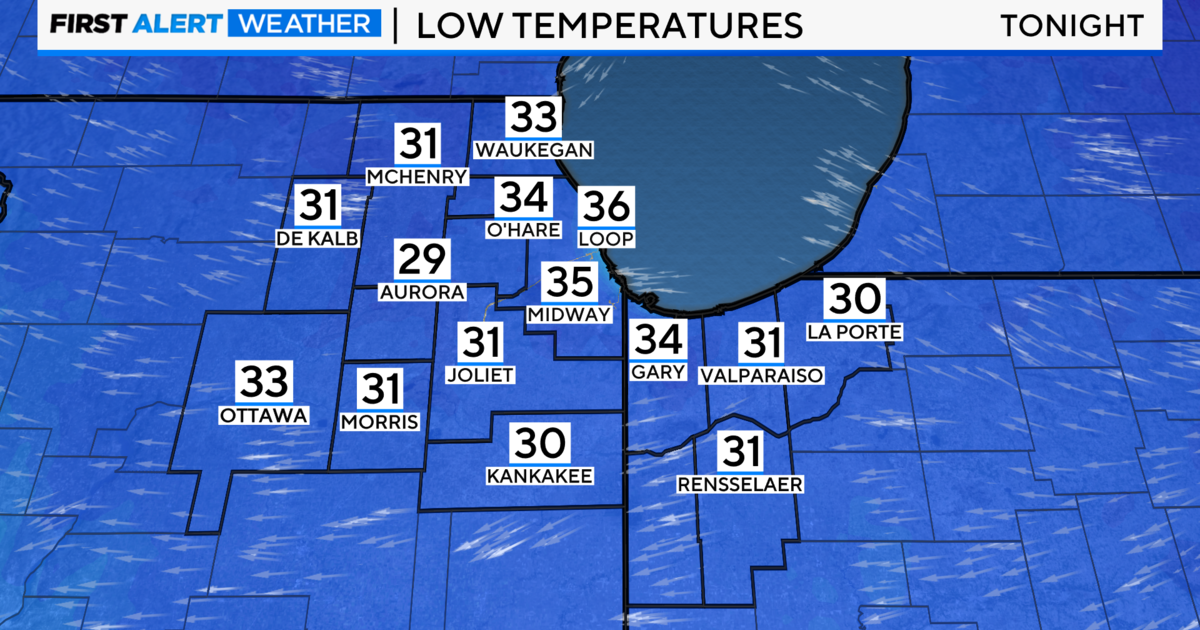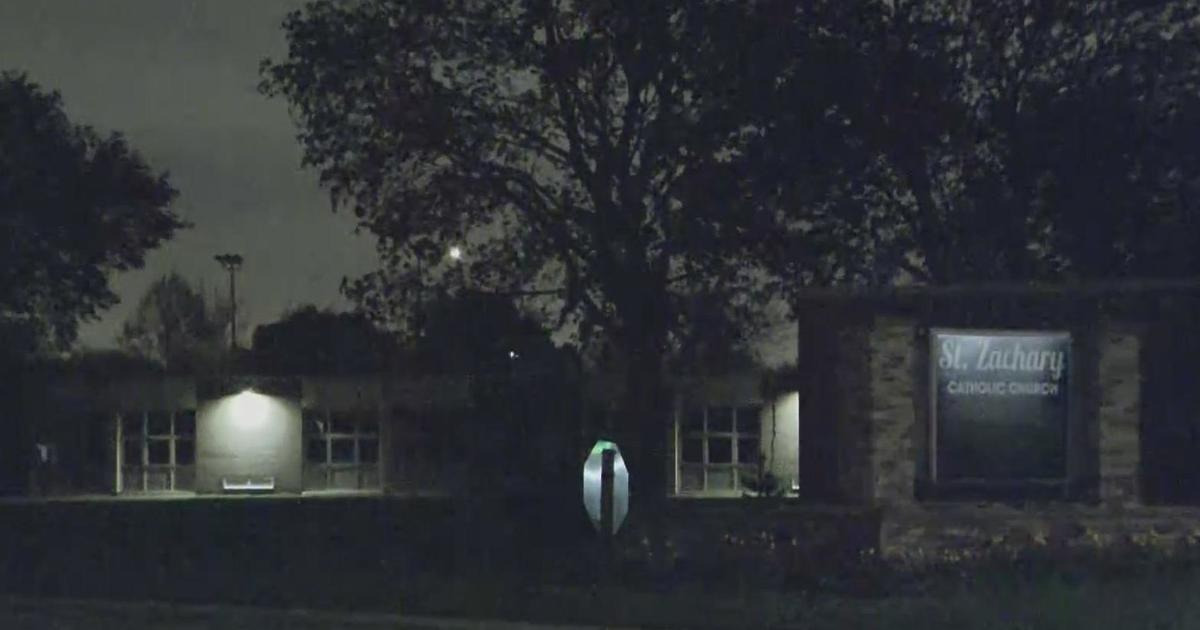Frigid Forecast For Bears Playoff Weekend
CHICAGO (CBS) -- If you're headed to the Bears' first playoff game on Sunday, navy blue shirts and headgear are in order. But you'll have to take precautions sure you don't end up with blue skin too.
CBS 2's Megan Glaros says for the noon kickoff when the Bears take on the Seattle Seahawks at Soldier Field, the air temperature will be 18 degrees.
The conditions will be cloudy and cold with a 20 percent chance of scattered flurries.
And the frigid forecast goes for the whole weekend. On Friday morning, the temperature was 19 degrees at O'Hare International Airport, but felt like 9 degrees.
When night falls, snow will breeze into the area. Totals are expected to top out at close to an inch in the far northern suburbs near the Wisconsin state line, but elsewhere, only a dusting is expected.
Glaros says the snow is expected to fall between about 9 p.m. and 3 a.m., before tapering to flurries on Saturday. The high for Saturday is 29 degrees.
The forecast high for Sunday is 20 degrees, but when next week comes around, get ready for thoughts of igloos and polar bears. The overnight low from Tuesday night into Wednesday is 3 degrees for the city, and in the western suburbs, temperatures may drop below zero.
And all joking aside, frostbite can be dangerous, and anyone out in the cold should take proper precautions.
Facts About Frostbite And Hypothermia
Temperatures this low can pose a risk for frostbite and hypothermia. Both are serious conditions that can strike easily in extreme cold.
• When blood circulation is impaired by frigid temperatures, frostbite occurs. The first symptoms are a pale appearance and a tingling or stinging sensation, followed by a feeling of pain and discomfort, then numbness. This is a mild form of frostbite, and can be treated by getting to a warm place and trying to bring the affected area to room temperature or a little higher. This can be done by a process as simple as putting frostbitten hands under your arms or using lukewarm water to soak them. But hot water should never be used, and the skin mustn't be rubbed. Warming must be accomplished gradually.
• It is not always easy to predict the severity of frostbite, since it can be several days before the extent of the damage is seen. Skin with mild frostbite turns yellow or grayish, and the affected skin remains soft and pliable, but turns red and flaky as it thaws. But in more severe cases, blisters or sores might develop after one or two days. Never break the blisters.
• A deeper frostbite will turn purple or blue upon thawing. Anyone with those symptoms must seek medical attention immediately. Treatment will usually involve an antibiotic cream for the skin. But the most serious consequence of frostbite may be amputation.
• Hypothermia is a contributing factor in more than 25,000 deaths in the U.S. annually. Watch out for such symptoms as stiff muscles, shivering, a puffy or swollen face, cold skin, slowed breathing, impaired physical coordination, and mental confusion and irritability. If you are experiencing such symptoms, get to warm shelter and call 911 for emergency aid.
• Call 911 if you see a hypothermia victim, and be careful in handling the person, since the heart is extremely weak when the body is cold. The hypothermia victim should be insulated with blankets or any available covering – even newspapers – but should never be re-warmed using hot water bottles, electric blankets, or other thermal heat sources. The victim should not get any food or drink, and the feet should not be elevated. That can cause cold blood to flow into the core of the body and lessen what heat may be left.



